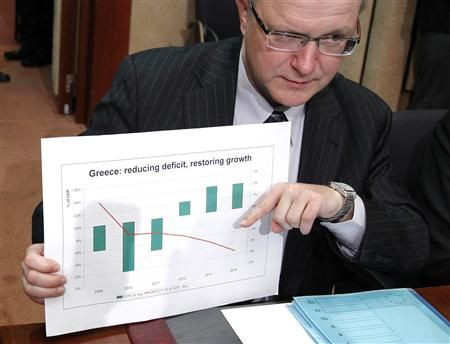Peripheral crisis worsens as Irish bailout disappoints markets

After the financial markets gave thumbs down to the Irish bailout deal and the common currency slumped further, the focus is converging on the eurozone itself, rather than on the indebted individual members of the bloc.
European commissioner for economic and monetary affairs Olli Rehn acknowledged on Monday that the disparities between the healthier economies of the bloc and the debt-laden periphery are more visible.
“It has to be admitted, there is a certain dualism in Europe,” Rehn said, referring to the strength of the German economy. His comment highlighted the apparent failure of desperate measures to get debt-hit member states back on track and suggested the chasm could widen in the coming months, threatening the bloc’s very existence.
The 85-billion-euro ($113 billion) bailout package for Ireland failed to assuage market fears that the debt contagion could spread to countries like Portugal and Spain and accelerate the domino effect.
The euro traded at near two-month lows in Asian trade on Tuesday as investors continued to shun the European common currency for safe haven assets. The euro had slumped to $1.3065 against the greenback on Monday, trading at its two-month lows. The Irish bailout clearly failed to lift euro, which has fallen almost 6 percent against the greenback in November.
Investors’ nerves were hardly soothed on Monday by the details of Ireland’s bail-out package, while there was further upward pressure on government bond yields in Portugal and Spain as concerns mounted that these countries could be in next in line to seek outside help, wrote Capital Economics analysts Ben May and John Higgins in a note on Tuesday.
The Irish bailout deal was not well received even by the Irish, the analysts pointed out. Although the size of the €85bn bailout package (€50bn to meet the Government’s financing needs and €35bn to support the banks) was in line with expectations, Ireland will actually provide €17.5bn of the funds itself by raiding its own pension funds.
The Irish are furious that the government is digging into the pension funds to bail out the banking industry while also paying a high interest rate of 5.8 percent for the bailout funds, which was far higher than the 5 percent rate agreed for Greece.
Though the repayment of Ireland’s loans will take place over a longer timeframe than the Greek Government had initially been given, investors are downbeat about the prospects of the economy's return to health any times soon.
It is pointed out that the austerity measures which are part of the rescue deal will cripple the growth of the economy while they also reduce the unaffordable budget deficit. It's a Catch-22 situation for the indebted countries in the eurozone periphery. Unlike Iceland which caved in 2008 and was bailed out, these countries don’t have the luxury of devaluing their currencies and exporting their way out of trouble.
Higgins and May point out that the lack of clarity about the permanent crisis mechanism agreed by European Union finance ministers also continue to weigh on the markets.
The conditions under which the private sector will be forced to accept write-downs when the ESM [European Stability Mechanism] comes into existence are still rather unclear, Private sector participation in a debt restructuring will be necessary if a euro-zone country that seeks funds from the ESM “would appear to be insolvent” based on the judgment of Eurogroup Ministers. Given the lack of clarity about what constitutes the appearance of insolvency and what type of restructuring might occur in such a case, markets are likely to remain wary of holding government debt issued by other troubled euro-zone countries like Portugal and Spain, they pointed out.
© Copyright IBTimes 2025. All rights reserved.





















